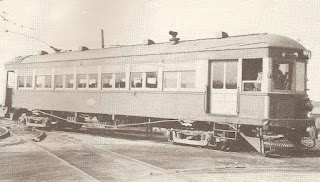by Kristine Schmucker, HCHM Curator
In one corner of the museum stands a dusty chair. The leather upholstery is cracked and torn. It certainly does not look to comfortable.
In one corner of the museum stands a dusty chair. The leather upholstery is cracked and torn. It certainly does not look to comfortable.
This artifact is a reminder of a brief time in Harvey County history before highways and interstates, when roads were often poor and the best way to get around was by the AVI.
The Arkansas Valley Interurban was a system of electric rail cars that connected three county seats, Wichita, Newton and Hutchinson, and several smaller towns in south central Kansas from 1910 to 1938. Freight service continued until 1942. At the height of use, the A.V.I. had 60.5 miles of track.
Isley Map
 |
| Laying AVI Track 1910 HCHS Photo Archives |
The A.V.I track was laid into Newton and the first car made the trip on October 11, 1911.
 |
| Corner of 5th & Main, Newton October 11, 1911 HCHM Photo Archives |
A one way ticket from Wichita to Newton was .65 cents and took about 75 minutes. The combination passenger, smoker and baggage cars could travel at about 45 mph.
 |
| A.V.I. Car at 5th & Main, Newton October 11, 1911 HCHM Photo Archives |
According to Webster T. Bolin, "It stopped anywhere along the track letting on hunters or ladies with baskets of eggs." The stop at Sand Creek had a small shelter for people to wait.
 |
| AVI Shelter House, Sand Creek Station ca. 1912 HCHM Photo Archives |
AVI Car No. 12 "The finest passenger interurban car."
The seat in our collection comes from AVI Car No. 12, which in 1917, "embodied the latest developments in steel construction and the finest passenger interurban car." Constructed by American Car Co., the exterior was painted red and cream.
 |
| AVI Car No 12, 1934 Isley, p. 34 |
An article in the Brill Magazine (1917) quoted in Isely described the new car.
"It is big, handsome, thoroughly modern and the roomy, bright and attractive interior with its well-planned compartments and comfortable seats will doubtless win additional traffic.
 |
| Interior AVI Car No. 12 Comfortable seats, big windows "afforded the best in public transportation." Isely, p. 29 |
Each side of the car has 14 windows . . . all doors, sashes, moldings and small panels are made of cherry stained mahogany and the varnish rubbed to a dull finish. The ceiling is cream color to increase the light be reflection.
The main and the smoking compartments are finished in the same style and are separated by a glazed partition. . . the seats are of the Brill stationary-back type with headroll . . . and upholstered in dark green plush. . . . Those in the smoking compartment are the same except they are upholstered in leather and four have reversible backs.
The toilet room at the rear of the main compartment has a sidewall type of flush closet with overhead tank."
 |
| AVI Car No 12, 1938 Isley, p. 34 |
Car No. 12 carried passengers until 1938, when passenger service was stopped. At that time, windows were boarded up and seats removed to use as an express car for freight. When the AVI disbanded, this car was sold to a private individual and used for feed storage at Bentley, Kansas.
Sources:
- Chandler, Allison. Trolley through the Countryside. Denver, Sage Books, 1963.
- Isely, Malcolm D. Arkansas Valley Interurban: Wichita, Newton, Hutchinson April 1956.
- Leonard, Jean D. "Harvey County's AVI was the 'car of the people'." Newton Kansan, June 10, 1981.
- Most of the remaining traces of the A.V.I. are on private property or are very difficult to get to, but through the magic of the internet you can take a virtual tour at this site- http://bridgehunter.com/category/railroad/arkansas-valley-interurban-railroad/
Connect with us on
or





If you wonder what ever happened to the rail when they pulled it up... A tour of the Salt Mine Museum in Hutch will answer your question... They cut the rail into sections and lowered it into the mine and put it back together again. The AVI lives underground now in Hutchinson.
ReplyDeleteMy great grandfather, William Clinton Calhoun, was a conductor on this railroad.
ReplyDeleteDo you have any photos/stories you would be willing to share?
DeleteWow !!! I really enjoyed this, but I have a question I'm in search for my gg grandfather& GG grandmother Benjamin and MenVille McDavid Haywood from Bastrop County Texas photograph. Are any African American photographs from Texas. please email me to let me know if you post any pictures from Texas. keep up the good work and great job !!!
DeleteHi Sharon, Thank you for your comment. I wish I could be of more help, but our focus is limited to Harvey County in Kansas. We do not have any photos from Texas. Some of the early African American family names from Harvey County include, Anderson, Rickman, Worter - and we do have photos of those early settlers. Good luck with your search. Kris Schmucker, HCHM Curator
ReplyDelete